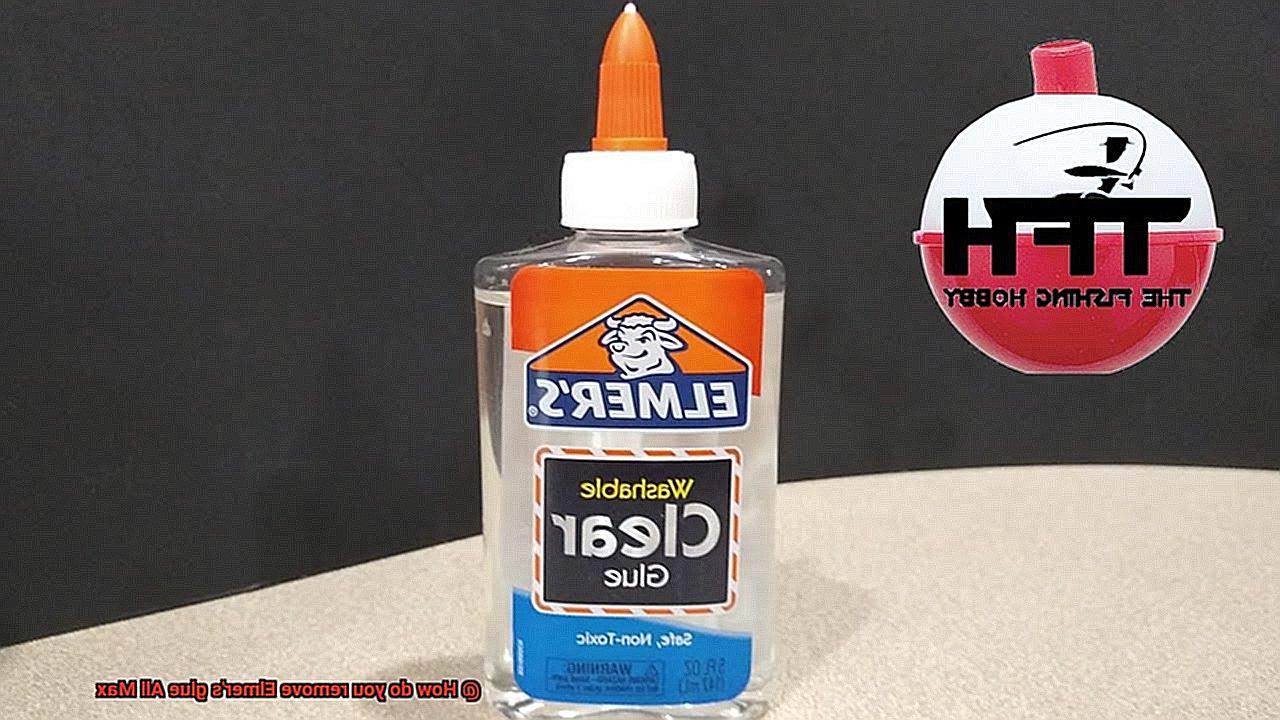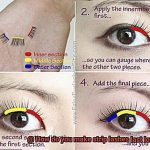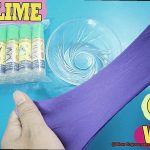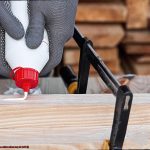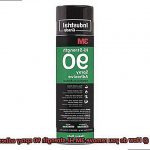Are you a DIY enthusiast, a crafty person, or someone who loves fixing things around the house? If so, you’ve probably used Elmer’s Glue All Max – a powerful adhesive that can bond almost anything from metal to plastic to ceramics. While it’s great for making things stick together, removing it can be a real headache if you accidentally get it in the wrong place.
But don’t worry. We’re here to help. In this blog post, we’ll show you the easiest and most effective ways to remove Elmer’s Glue All Max from various surfaces without causing any damage. Whether it’s on your clothes, carpets, skin or household items like furniture, we’ve got you covered with simple procedures that will eliminate pesky glue residue quickly and easily.
In this informative guide, we’ll walk you through the appropriate materials and tools needed for removing glue residue, step-by-step procedures to follow, and the best products to use. So keep reading and discover how to get rid of Elmer’s Glue All Max from any surface without leaving any stains or marks.
With our tips and tricks at your fingertips, you’ll learn how to remove stubborn glue residue like a pro.
What is Elmer’s Glue All Max?
Contents
- 1 What is Elmer’s Glue All Max?
- 2 How to Remove Elmer’s Glue All Max Using Hot Water and Soap
- 3 How to Remove Elmer’s Glue All Max Using Rubbing Alcohol or Acetone
- 4 Other Options for Removing Elmer’s Glue All Max
- 5 Pros and Cons of Different Methods for Removing Elmer’s Glue All Max
- 6 Tips for Safely and Effectively Removing Elmer’s Glue All Max
- 7 Common Mistakes to Avoid When Removing Elmer’s Glue All Max
- 8 Conclusion
Elmer’s Glue All Max: The Versatile and Strong Adhesive for Your Crafting and DIY Needs
Are you seeking an adhesive that can bond a variety of surfaces with maximum strength? Look no further than Elmer’s Glue All Max. This popular adhesive is perfect for use in arts and crafts projects, as well as in DIY home repairs. Its unique features set it apart from other Elmer’s glue products.
One of the most significant benefits of Elmer’s Glue All Max is its maximum strength formula. It has a higher bonding strength compared to other Elmer’s glue products, making it ideal for heavy-duty projects. Additionally, it has a longer drying time, which allows for more time to adjust and reposition the bonded items before it sets.
Another essential characteristic of this adhesive is its waterproof and heat-resistant properties. This makes it suitable for use in outdoor projects or in areas exposed to moisture and heat. It can also withstand extreme temperatures without losing its bonding strength, ensuring that your project stays secured even under harsh conditions.
Furthermore, Elmer’s Glue All Max dries clear, leaving no residue or yellowing on the bonded surface. This feature makes it particularly useful for projects where aesthetics are vital, such as when working with glass or mirrors.
If you need to remove this glue from a surface, there are specific methods that must be followed to avoid damaging the bonded material. Nonetheless, the reliability and versatility of Elmer’s Glue All Max make it a popular choice among crafters and DIY enthusiasts alike.
How to Remove Elmer’s Glue All Max Using Hot Water and Soap
Removing stubborn glue stains can be a real headache. If you’re dealing with Elmer’s Glue All Max, a potent adhesive that bonds different surfaces, don’t worry. You can use hot water and soap to remove it safely and easily. Here’s a step-by-step guide to help you get rid of Elmer’s Glue All Max from various surfaces.
Scrape off Excess Glue
The first step is to remove any excess glue from the surface using a blunt object like a scraper or spoon. Be careful not to damage the surface underneath while doing so.
Soak the Affected Area in Hot Water
Soak the affected area in hot water for several minutes to soften the glue. The hot water helps loosen the glue, making it easier to remove. However, be cautious not to use boiling water as this can cause burns or damage to the surface being cleaned.
Apply Soap
Once the glue has softened, apply soap directly onto the affected area and rub gently with your fingers or a soft-bristled brush. The soap helps break down the glue further, making it easier to remove.
Rinse with Hot Water
Rinse the area with hot water once again, ensuring that all traces of the glue and soap have been removed. If there are still remnants of glue left behind, repeat the process until the affected area is entirely clean.
Dry the Surface
Finally, dry the surface with a clean cloth or towel to prevent any water damage and restore its original appearance.
How to Remove Elmer’s Glue All Max Using Rubbing Alcohol or Acetone
Removing Elmer’s Glue All Max can be a daunting task, but don’t worry. With the help of rubbing alcohol or acetone, you can easily get rid of it. Here are some easy steps to follow:
Gather your supplies
You will need rubbing alcohol or acetone, a clean cloth or sponge, and warm water.
Using Rubbing Alcohol
Start by dampening the cloth or sponge with warm water and wring out any excess. Pour a small amount of rubbing alcohol onto the cloth or sponge and apply it to the affected area.
Allow the rubbing alcohol to sit for a few minutes to allow it to penetrate the glue. Then, use the cloth to gently rub off the glue until it is completely removed. Repeat this process until all of the glue is gone.
Using Acetone
Begin by dampening the cloth or sponge in warm water and wringing out any excess. Pour a small amount of acetone onto the cloth or sponge and apply it to the affected area. Gently rub until the glue begins to dissolve. Be cautious when using acetone as it is a stronger solvent and can damage some surfaces. Always test it on a small, inconspicuous area first before using it on the entire affected area.
Safety First
It’s important to wear gloves and work in a well-ventilated area when using rubbing alcohol or acetone. Keep in mind that prolonged exposure to these solvents can be harmful. It’s crucial to follow proper safety precautions to avoid any potential harm or damage.
Clean Up
After removing the glue, make sure to thoroughly clean the affected area with soap and water to ensure all residue is removed.
Other Options for Removing Elmer’s Glue All Max
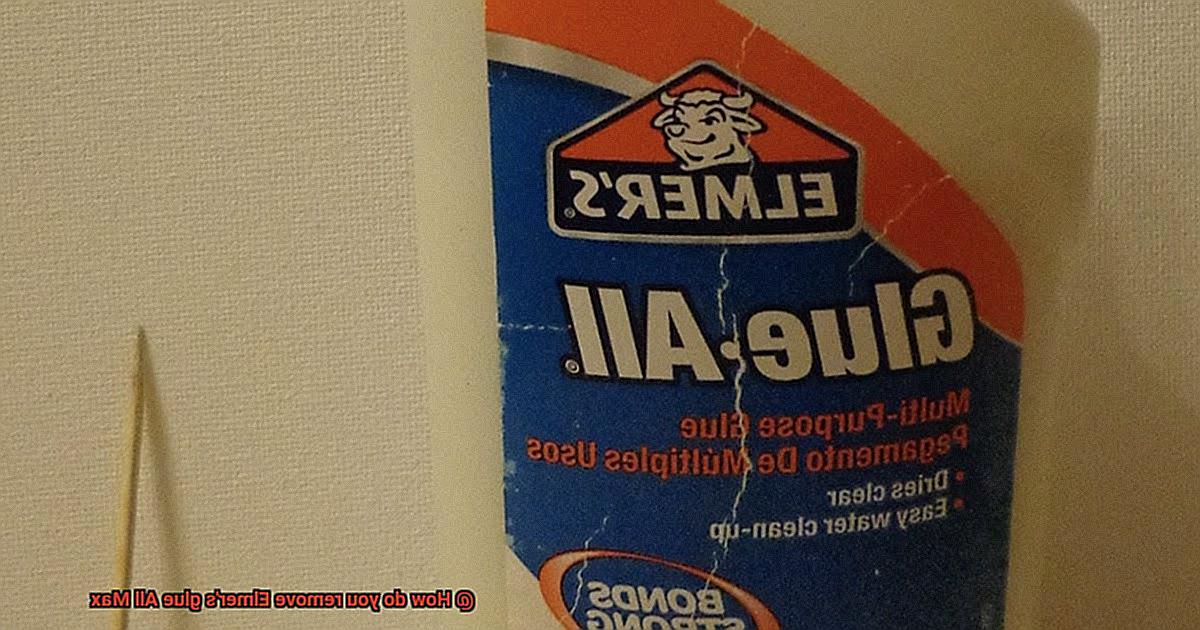
As an expert, I’m here to tell you that there are several options available to help you defeat this tough adhesive.
Rubbing alcohol is one of the most effective options for removing Elmer’s Glue All Max. Simply apply it to the affected area and let it sit for a few minutes before using a scraper or your fingernail to gently scrape away the glue. While this method may require some elbow grease and multiple applications, it can be a simple and efficient solution.
For those looking for a gentler option, vinegar mixed with water can also do the trick. Apply the mixture to the affected area, let it sit for a few minutes, and then gently scrape away the glue. This method may also require multiple applications, but it’s less harsh on surfaces and can be an effective alternative.
Acetone found in nail polish remover can also remove Elmer’s Glue All Max. However, it’s important to test it on an inconspicuous area first before using it on the entire surface. Always exercise caution when using acetone and make sure to wear gloves.
Lastly, hot water can also be an effective method for removing Elmer’s Glue All Max. Soak the affected area in hot water for several minutes before gently scraping away the glue. This method may require patience, but it’s a gentle and effective option.
Remember that there is no one-size-fits-all solution when it comes to removing Elmer’s Glue All Max. It’s important to choose a method that works best for your specific situation and surface. Always work in a well-ventilated area and wear gloves when necessary. And after removing the glue, clean the affected area thoroughly with soap and water.
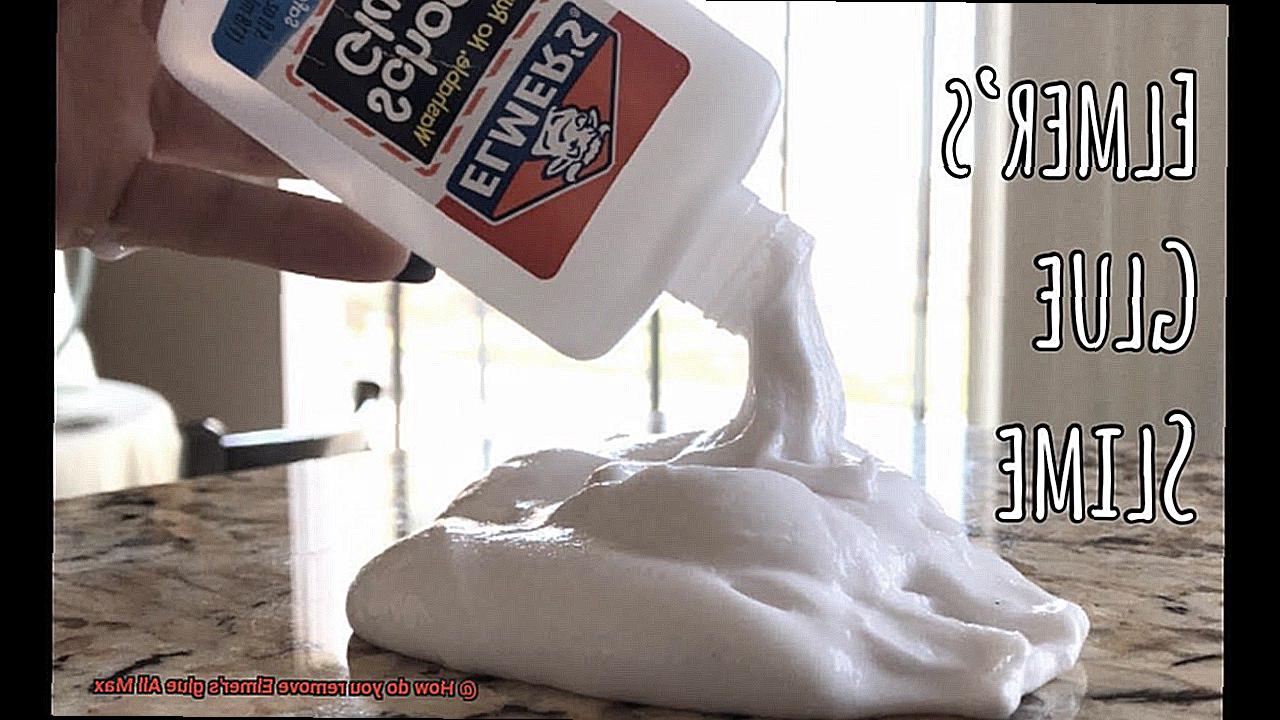
Pros and Cons of Different Methods for Removing Elmer’s Glue All Max
Fear not, as we have researched and compiled a list of methods that will make this task effortless. However, each method has its own benefits and drawbacks, so let’s examine them in detail.
First on our list is the soap and water method. This easy-to-use method involves soaking the affected area in warm, soapy water to soften the glue. The benefits of this method are that it’s quick, simple, and safe to use. However, it may not be effective for larger spills or if the glue has already dried. It may also take some time to remove all traces of glue using this method.
Next up is the vinegar method. Soaking a cloth or sponge in vinegar and placing it over the affected area can help break down the glue and make it easier to remove. The benefits of this method are that vinegar is a natural ingredient that is readily available in most households, and it’s effective for removing dried glue. However, the strong smell of vinegar may be off-putting for some people, and it may not work as well on larger spills or if the glue has been left to dry for a long time.
Lastly, we have the acetone method. This powerful solvent can break down most types of glue and is highly effective, even on dried glue. However, acetone is a harsh chemical that can be dangerous if not used properly and can damage certain surfaces. The benefits of this method are that it works quickly and effectively, but caution must be exercised when using it.
Tips for Safely and Effectively Removing Elmer’s Glue All Max
Removing Elmer’s Glue All Max can be a challenging task, especially when dealing with delicate surfaces. However, with the right tips and tricks in mind, you can safely and effectively remove this adhesive without causing any damage. Here are 5 sub-sections to keep in mind when removing Elmer’s Glue All Max.
Protect surfaces and clothing from glue stains
Before starting the removal process, it is important to protect your surfaces and clothing from any unwanted damage or stains. Cover your working area with a plastic tablecloth or newspaper to prevent the glue from sticking to surfaces or clothes.
Use warm, soapy water for easy removal
One of the most effective methods for removing Elmer’s Glue All Max is by using warm, soapy water. Mix a few drops of dish soap with warm water and use a soft cloth or sponge to gently scrub away the glue. This method is particularly effective for removing glue from clothing or other fabrics, but it can also be used on hard surfaces like countertops or floors.
Vinegar or rubbing alcohol can work wonders
If warm, soapy water does not work, try using vinegar or rubbing alcohol. Soak a cloth or sponge in white vinegar and use it to gently scrub away the glue. Alternatively, apply rubbing alcohol to the affected area and allow it to sit for a few minutes before gently wiping away the glue with a soft cloth.
Avoid harsh chemicals
It is crucial to avoid using harsh chemicals or abrasives when removing Elmer’s Glue All Max as these can cause damage to surfaces and skin irritation. Stick to gentle and natural methods that won’t harm your surfaces.
Wash your hands thoroughly after handling glue
After handling the glue and any cleaning products, make sure to wash your hands thoroughly to prevent any unwanted skin irritation. It is also important to avoid touching your face or eyes while handling the glue.
Common Mistakes to Avoid When Removing Elmer’s Glue All Max
Fear not, my friend. As an expert in this field, I am here to help you avoid some common mistakes when removing this stubborn glue.
First and foremost, using too much water is a big no-no. While it may seem like a good idea to douse the glue with water to loosen it, this can actually make things worse. Too much water can spread the glue around and damage certain surfaces, like wood or paper. Instead, opt for a specialized glue remover or a mixture of vinegar and water to effectively remove the glue without causing any harm.
Another mistake to avoid is using harsh chemicals or abrasive materials to remove the glue. While they may seem like quick solutions, they can actually cause damage to the surface you are cleaning and even harm your health if not used properly. Rubbing alcohol or nail polish remover are safer alternatives that can effectively remove the glue without causing any damage.
Lastly, don’t rush the process. Removing Elmer’s Glue All Max takes time, especially if it has dried on the surface. Trying to scrape or wipe away the glue before it has had a chance to fully loosen can cause damage and make it more difficult to remove in the long run. Be patient and give the glue remover time to work its magic.
DLbzelrXlGk” >
Also Read: Is Elmer’s glue waterproof after it dries?
Conclusion
In conclusion, Elmer’s Glue All Max is a powerful adhesive that can bond almost any material with ease. But when it comes to removing it, things can quickly become frustrating and overwhelming. Luckily, there are numerous effective techniques for removing this glue from various surfaces without causing damage.
One simple method involves using hot water and soap to soften the glue before gently rubbing it away with your fingers or a soft-bristled brush. Rubbing alcohol or acetone can also be used by dampening a cloth or sponge with warm water and then applying the substance to the affected area before carefully rubbing off the glue.
For those who prefer natural solutions, vinegar mixed with water can work wonders in dissolving stubborn glue residue. It’s important to choose the right method for your specific situation and surface while working in a well-ventilated area and wearing gloves if necessary.
Remember to protect your surfaces and clothing from glue stains, avoid harsh chemicals or abrasive materials, be patient, and wash your hands thoroughly after handling glue.

